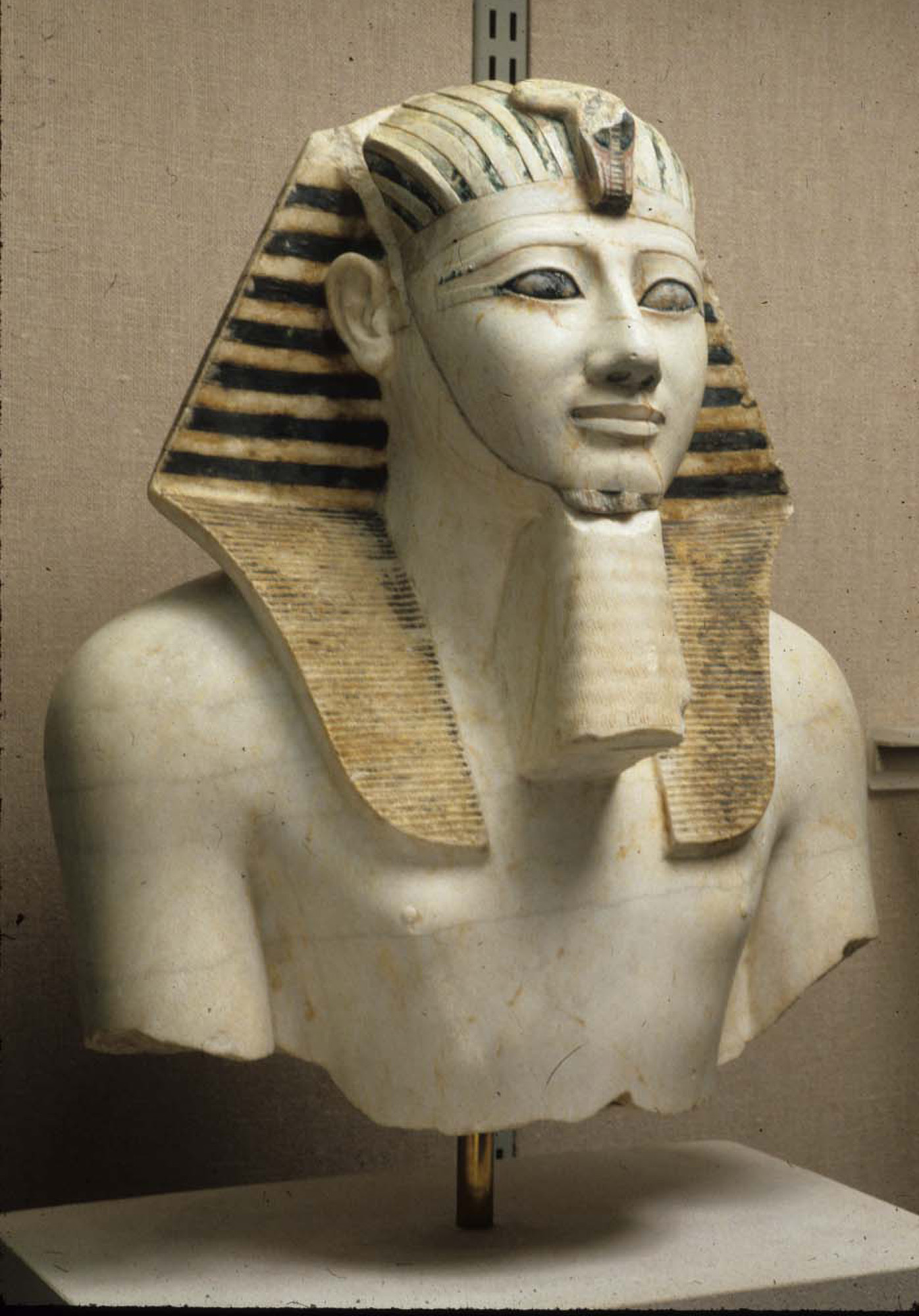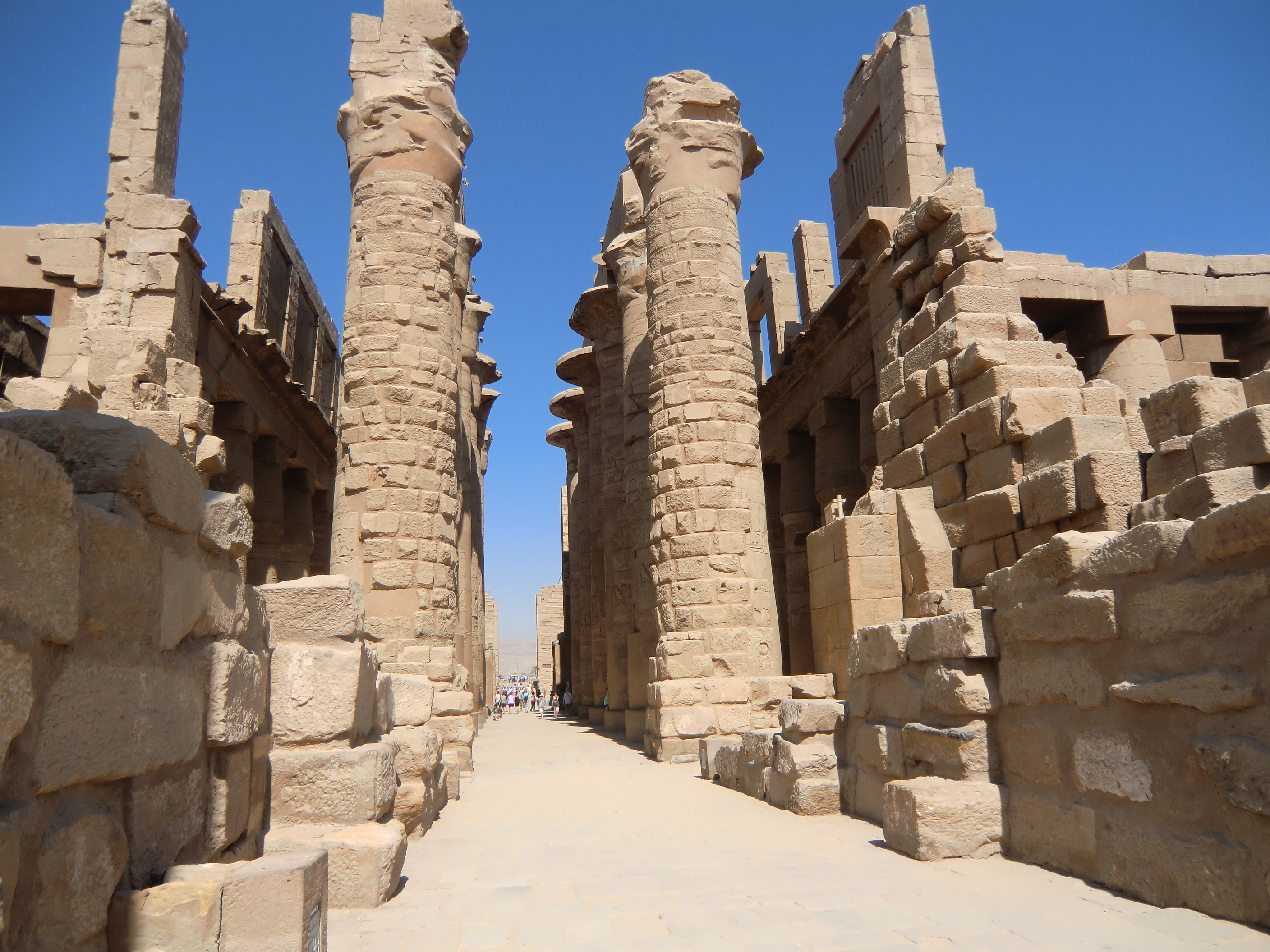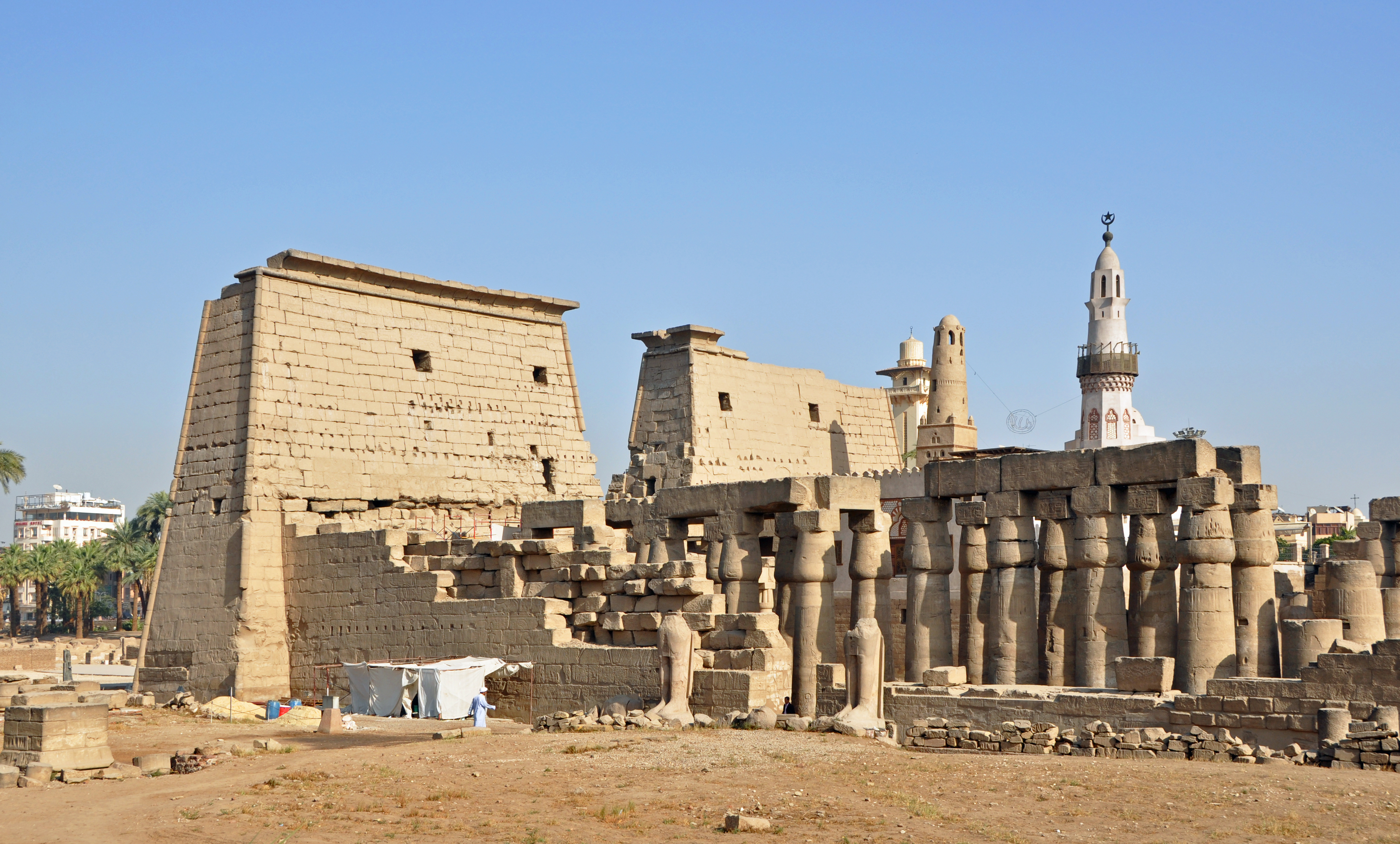|
Ramesses II
Ramesses II ( egy, rꜥ-ms-sw ''Rīʿa-məsī-sū'', , meaning "Ra is the one who bore him"; ), commonly known as Ramesses the Great, was the third pharaoh of the Nineteenth Dynasty of Egypt. Along with Thutmose III he is often regarded as the greatest, most celebrated, and most powerful pharaoh of the New Kingdom, itself the most powerful period of Ancient Egypt. The name ''Ramesses'' is pronounced variously . Other spellings include Rameses and Ramses; in grc-koi, Ῥαμέσσης, Rhaméssēs. He is known as Ozymandias in Greek sources ( grc-koi, Ὀσυμανδύας, translit=Osymandýas), from the first part of Ramesses's regnal name, , "The Maat of Ra is powerful, Chosen of Ra". His successors and later Egyptians called him the "Great Ancestor". At age fourteen, he was appointed prince regent by his father, Seti I. Most Egyptologists today believe he assumed the throne on 31 May 1279 BC, based on his known accession date of III Season of the Harvest, day 27. The ... [...More Info...] [...Related Items...] OR: [Wikipedia] [Google] [Baidu] |
Nineteenth Dynasty Of Egypt
The Nineteenth Dynasty of Egypt (notated Dynasty XIX), also known as the Ramessid dynasty, is classified as the second Dynasty of the Ancient Egyptian New Kingdom period, lasting from 1292 BC to 1189 BC. The 19th Dynasty and the 20th Dynasty furthermore together constitute an era known as the ''Ramesside period''. This Dynasty was founded by Vizier Ramesses I, whom Pharaoh Horemheb chose as his successor to the throne. History Background The warrior kings of the early 18th Dynasty had encountered only little resistance from neighbouring kingdoms, allowing them to expand their realm of influence easily, but the international situation had changed radically towards the end of the dynasty. The Hittites had gradually extended their influence into Syria and Canaan to become a major power in international politics, a power that both Seti I and his son Ramesses II would confront in the future. 19th Dynasty Seti and Ramesses II The New Kingdom of Egypt reached the zenith of ... [...More Info...] [...Related Items...] OR: [Wikipedia] [Google] [Baidu] |
List Of Children Of Ramesses II
The Ancient Egyptian Pharaoh Ramesses II had a large number of children: between 48 to 50 sons, and 40 to 53 daughters – whom he had depicted on several monuments. Ramesses apparently made no distinctions between the offspring of his first two principal wives, Nefertari and Isetnofret. Both queens' firstborn sons and first few daughters had statues at the entrance of the Greater Abu Simbel temple, although only Nefertari's children were depicted in the smaller temple, dedicated to her. Other than Nefertari and Isetnofret, Ramesses had six more great royal wives during his reign – his own daughters Bintanath, Meritamen, Nebettawy and Henutmire (who, according to another theory was his sister), and two daughters of Hattusili III, King of Hatti. Except the first Hittite princess Maathorneferure and possibly Bintanath, none are known to have borne children to the pharaoh. The first few children of Ramesses usually appear in the same order on depictions. Lists of princes and ... [...More Info...] [...Related Items...] OR: [Wikipedia] [Google] [Baidu] |
Transliteration Of Ancient Egyptian
As used for Egyptology, transliteration of Ancient Egyptian is the process of converting (or mapping) texts written as Egyptian language symbols to alphabetic symbols representing uniliteral Egyptian hieroglyphs, hieroglyphs or their hieratic and Demotic (Egyptian), demotic counterparts. This process facilitates the publication of texts where the inclusion of photographs or drawings of an actual Egyptian document is impractical. Transliteration is not the same as transcription (linguistics), transcription. Transliteration is the representation of written symbols in a consistent way in a different writing system, while transcription indicates the pronunciation of a text. For the case of Ancient Egyptian, precise details of the phonology are not known completely. Transcription systems for Ancient Egyptian do exist, but they rely on linguistic reconstruction (depending on evidence from the Coptic language and other details) and are thus theoretical in nature. Egyptologists rely on tran ... [...More Info...] [...Related Items...] OR: [Wikipedia] [Google] [Baidu] |
New Kingdom Of Egypt
The New Kingdom, also referred to as the Egyptian Empire, is the period in ancient Egyptian history between the sixteenth century BC and the eleventh century BC, covering the Eighteenth, Nineteenth, and Twentieth dynasties of Egypt. Radiocarbon dating places the beginning of the New Kingdom between 1570 BC and 1544 BC. The New Kingdom followed the Second Intermediate Period and was succeeded by the Third Intermediate Period. It was Egypt's most prosperous time and marked the peak of its power. The concept of a "New Kingdom" as one of three "golden ages" was coined in 1845 by German Egyptologist Baron von Bunsen, and its definition would evolve significantly throughout the nineteenth and twentieth centuries. The later part of this period, under the Nineteenth and Twentieth dynasties (1292–1069 BC), is also known as the ''Ramesside period''. It is named after the eleven pharaohs who took the name Ramesses, after Ramesses I, the founder of the Nineteenth Dynasty. Possibly ... [...More Info...] [...Related Items...] OR: [Wikipedia] [Google] [Baidu] |
Thutmose III
Thutmose III (variously also spelt Tuthmosis or Thothmes), sometimes called Thutmose the Great, was the sixth pharaoh of the Eighteenth Dynasty. Officially, Thutmose III ruled Egypt for almost 54 years and his reign is usually dated from 28 April 1479 BC to 11 March 1425 BC, from the age of two and until his death at age fifty-six; however, during the first 22 years of his reign, he was coregent with his stepmother and aunt, Hatshepsut, who was named the pharaoh. While he was shown first on surviving monuments, both were assigned the usual royal names and insignia and neither is given any obvious seniority over the other. Thutmose served as the head of Hatshepsut's armies. During the final two years of his reign, he appointed his son and successor, Amenhotep II, as his junior co-regent. His firstborn son and heir to the throne, Amenemhat, predeceased Thutmose III. He would become one of the most powerful pharaohs of the 18th dynasty. Becoming the sole ruling pharaoh of the ... [...More Info...] [...Related Items...] OR: [Wikipedia] [Google] [Baidu] |
Pharaoh
Pharaoh (, ; Egyptian: ''pr ꜥꜣ''; cop, , Pǝrro; Biblical Hebrew: ''Parʿō'') is the vernacular term often used by modern authors for the kings of ancient Egypt who ruled as monarchs from the First Dynasty (c. 3150 BC) until the annexation of Egypt by the Roman Empire in 30 BC. However, regardless of gender, "king" was the term used most frequently by the ancient Egyptians for their monarchs through the middle of the Eighteenth Dynasty during the New Kingdom. The term "pharaoh" was not used contemporaneously for a ruler until a possible reference to Merneptah, c. 1210 BC during the Nineteenth Dynasty, nor consistently used until the decline and instability that began with the Twenty-Fifth Dynasty. In the early dynasties, ancient Egyptian kings had as many as three titles: the Horus, the Sedge and Bee ( ''nswt-bjtj''), and the Two Ladies or Nebty ( ''nbtj'') name. The Golden Horus and the nomen and prenomen titles were added later. In Egyptian society, religio ... [...More Info...] [...Related Items...] OR: [Wikipedia] [Google] [Baidu] |
Karnak
The Karnak Temple Complex, commonly known as Karnak (, which was originally derived from ar, خورنق ''Khurnaq'' "fortified village"), comprises a vast mix of decayed temples, pylons, chapels, and other buildings near Luxor, Egypt. Construction at the complex began during the reign of Senusret I (reigned 1971–1926 BCE) in the Middle Kingdom (around 2000–1700 BCE) and continued into the Ptolemaic Kingdom (305–30 BCE), although most of the extant buildings date from the New Kingdom. The area around Karnak was the ancient Egyptian ''Ipet-isut'' ("The Most Selected of Places") and the main place of worship of the 18th Dynastic Theban Triad, with the god Amun as its head. It is part of the monumental city of Thebes, and in 1979 it was inscribed on the UNESCO World Heritage List along with the rest of the city. The Karnak complex gives its name to the nearby, and partly surrounded, modern village of El-Karnak, north of Luxor. Overview The complex is a vast open site an ... [...More Info...] [...Related Items...] OR: [Wikipedia] [Google] [Baidu] |
Luxor
Luxor ( ar, الأقصر, al-ʾuqṣur, lit=the palaces) is a modern city in Upper (southern) Egypt which includes the site of the Ancient Egyptian city of ''Thebes''. Luxor has frequently been characterized as the "world's greatest open-air museum", as the ruins of the Egyptian temple complexes at Karnak and Luxor stand within the modern city. Immediately opposite, across the River Nile, lie the monuments, temples and tombs of the west bank Theban Necropolis, which includes the Valley of the Kings and Valley of the Queens. Thousands of tourists from all around the world arrive annually to visit Luxor's monuments, contributing greatly to the economy of the modern city. The population of Luxor is 422,407 (2021), with an area of approximately . It is the capital of Luxor Governorate. It is among the oldest inhabited cities in the world. Etymology The name ''Luxor'' ( ar, الأقصر, al-ʾuqṣur, lit=the palace, pronounced , , Upper Egyptian: ) derives from the Arabic ... [...More Info...] [...Related Items...] OR: [Wikipedia] [Google] [Baidu] |
Ramesseum
The Ramesseum is the memorial temple (or mortuary temple) of Pharaoh Ramesses II ("Ramesses the Great", also spelled "Ramses" and "Rameses"). It is located in the Theban Necropolis in Upper Egypt, on the west of the River Nile, across from the modern city of Luxor. The name – or at least its French form Rhamesséion – was coined by Jean-François Champollion, who visited the ruins of the site in 1829 and first identified the hieroglyphs making up Ramesses's names and titles on the walls. It was originally called the ''House of millions of years of Usermaatra-setepenra that unites with Thebes-the-city in the domain of Amon.'' ''Usermaatra-setepenra'' was the prenomen of Ramesses II. History Ramesses II modified, usurped, or constructed many buildings from the ground up, and the most splendid of these, in accordance with New Kingdom royal burial practices, would have been his memorial temple: a place of worship dedicated to pharaoh, god on earth, where his memory would h ... [...More Info...] [...Related Items...] OR: [Wikipedia] [Google] [Baidu] |
Abydos, Egypt
Abydos ( ar, أبيدوس, Abīdūs or ; Sahidic cop, Ⲉⲃⲱⲧ ') is one of the oldest cities of ancient Egypt, and also of the eighth nome in Upper Egypt. It is located about west of the Nile at latitude 26° 10' N, near the modern Egyptian towns of El Araba El Madfuna and El Balyana. In the ancient Egyptian language, the city was called Abdju (''ꜣbḏw'' or ''AbDw''). The English name ''Abydos'' comes from the Greek , a name borrowed by Greek geographers from the unrelated city of Abydos on the Hellespont. Considered one of the most important archaeological sites in Egypt, the sacred city of Abydos was the site of many ancient temples, including Umm el-Qa'ab, a royal necropolis where early pharaohs were entombed. These tombs began to be seen as extremely significant burials and in later times it became desirable to be buried in the area, leading to the growth of the town's importance as a cult site. Today, Abydos is notable for the memorial temple of Seti I, ... [...More Info...] [...Related Items...] OR: [Wikipedia] [Google] [Baidu] |








.jpg)